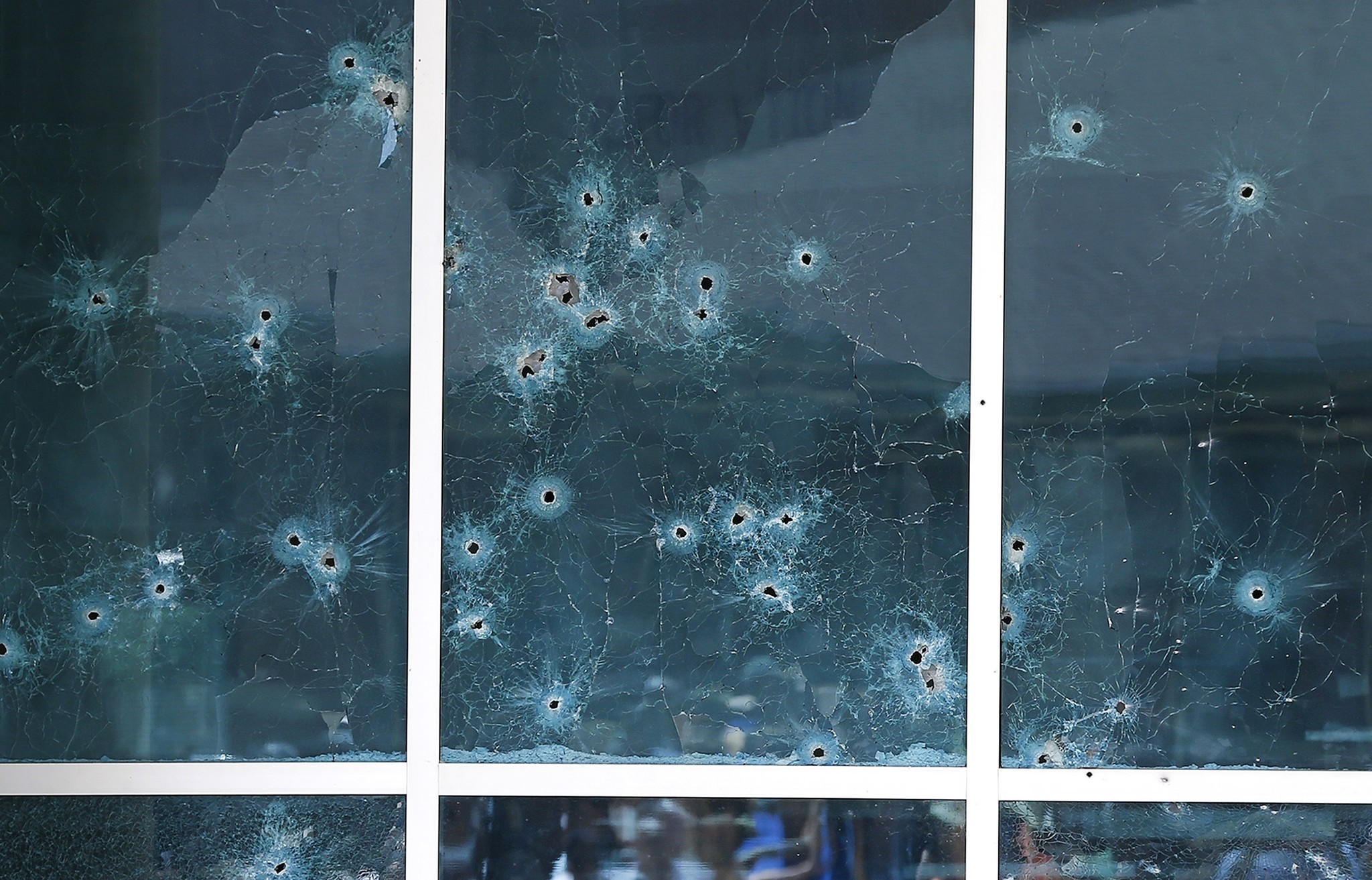There’s a story about a woman being herded off the train at Auschwitz after enduring conditions unfit for the cattle previously transported in the same cars. Stepping onto the platform, she asks a guard, “Why?” “There is no why here,” he replies.
 The day before the latest spate of police executions and mass murders in America (this time of policemen in Dallas), I had a conversation with a “voice dialogue facilitator” in Portland, Oregon. In the course of the conversation, a parable of Jesus, too shocking and relevant not to be true, came up.
The day before the latest spate of police executions and mass murders in America (this time of policemen in Dallas), I had a conversation with a “voice dialogue facilitator” in Portland, Oregon. In the course of the conversation, a parable of Jesus, too shocking and relevant not to be true, came up.
“And as they were traveling along the road, he said to a certain man, ‘Follow me.’ And the man said, ‘Let me first go and bury my father.’ But Jesus said to him, ‘Let the dead bury the dead.”’
The woman from Portland asked, “What do you think he meant by that?”
Clearly he meant let the inwardly dead bury the physically dead, didn’t he?
The vast majority of people in America report feeling ‘numb,’ a modern-day euphemism for inwardly dead. Can the dead come back to life? Yes, if they really want to, but one has to concern oneself with the living, beginning with oneself. That doesn’t imply self-centered navel staring.
Jesus apparently lived in a culture like this, a culture of institutionalized violence and racism. The overlords then were the Romans, with their overtly brutal methods of oppression, rather than the usually more subtle propaganda and policing by the political-media-entertainment-corporate complex of today. However a pervasive darkness and deadness, generating a sense of hopelessness and ‘numbness,’ was probably similar.
In violence-besotted and gun-infested America, where war has become a permanent condition, the police often react with force as a first resort, especially against black males who are deemed a threat until they prove otherwise.
Historic oppression has produced a subconscious fear of the oppressed in whites, specifically the black man. That requires further oppression to quell, culminating in the vicious circle we see this week. And the cycle of violence from the long and living legacy of systemic racism is accelerating, rather than ending.
There are many, including a priestly writer of a recent philosophers’ “Stone” piece in the New York Times, that believe and would have you believe that one cannot even use the world evil without invoking supernatural or mythological notions. They are seriously mistaken.
Defining evil as an “aporia, a black hole in thought,” does nothing to redress “the invocation of evil in our public discourse,” much less address the exponential increase of the phenomenon itself in the global society.
And it becomes downright jesuitical to say, “Because evil exists beyond the limits of reason, what matters is not that we identify evil, but that we respond to it appropriately.” How can you adequately respond to what you cannot even identify?
Proposing an adequate response that avoids the question of the origin, nature and operation of evil offers nothing clear and tangible in response to it. Understanding and response go together.
Evil exists, and has intentionality. Evil is not a thing per se, but it has very thick substance, and it is a real phenomenon. Evil has no purpose but evil, no goal but deadness of the human spirit in the individual and humanity as a whole. It is the death wish in human consciousness.
Evil is man-made however, and can and must be understood rationally, even though reason cannot contain it, and explanation, however insightful, cannot dispel it.
Evil is a collective phenomenon in human consciousness that flows through inwardly dead and narcissistic people. Mental illness does not generate evil; the inadequate response to evil can and does generate mental illness.
Good does not oppose evil, or react violently against it. Doing so brings one down into the gutter with evil, enlarging the darkness that evil hooks into within one.
Good does not stand above darkness in judgment. We all have darkness within us, and are susceptible to evil, the metaphysical reality that so dominates human consciousness, relationship and the world at present.
Not reacting in the face of evil is very hard to do. But we can work toward the good that simply stands, responding with force only as a last resort in the face of imminent harm to oneself or others.
This is why the Bush-Cheney-Friedman ‘war of choice’ was so evil. It was clearly unnecessary, even at the time. There was no imminent threat, irrespective of the ginned up intelligence of weapons of mass destruction.
Another New York Times columnist reports “feeling numb and anguished and heartbroken” at recent events. Then he goes off the reservation—or rather he stays too meekly on it.
“I fear that time is requirement for remedy. We didn’t arrive at this place overnight and we won’t move on from it overnight.”
He’s right to fear time. Time is the enemy of humanity. Employing time is what brought us to this pass, as a nation and a species. The seemingly unassailable logic of needing more time is a prescription for more violence, darkness and deadness.
It isn’t that it won’t take time to work through these historical patterns and phenomena. It’s that employing time, looking to time, taking time, hoping against hope through time, is clearly false and counterproductive of the very change we want to bring about.
As the Stones Satan-quoting song goes, “Time is on my side.” Yes it is.
Martin LeFevre

